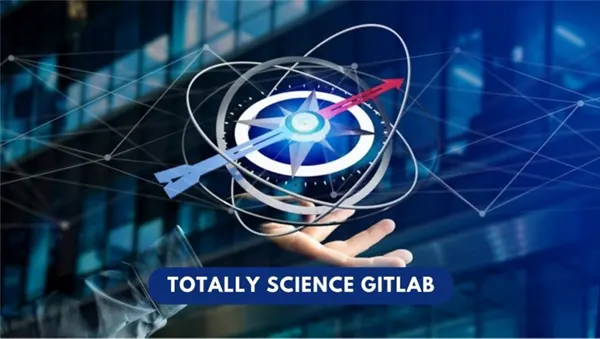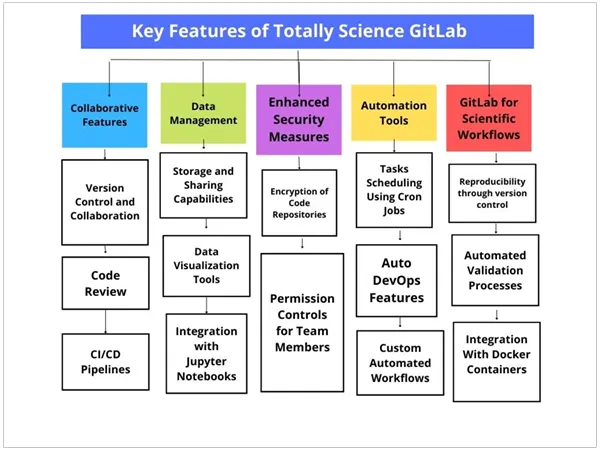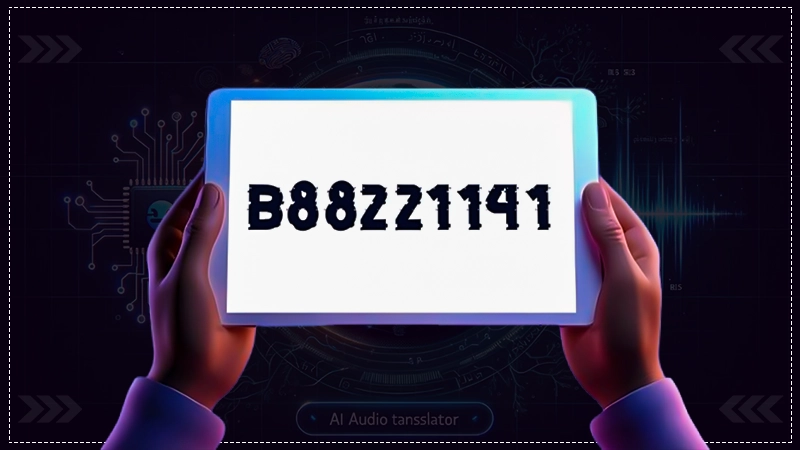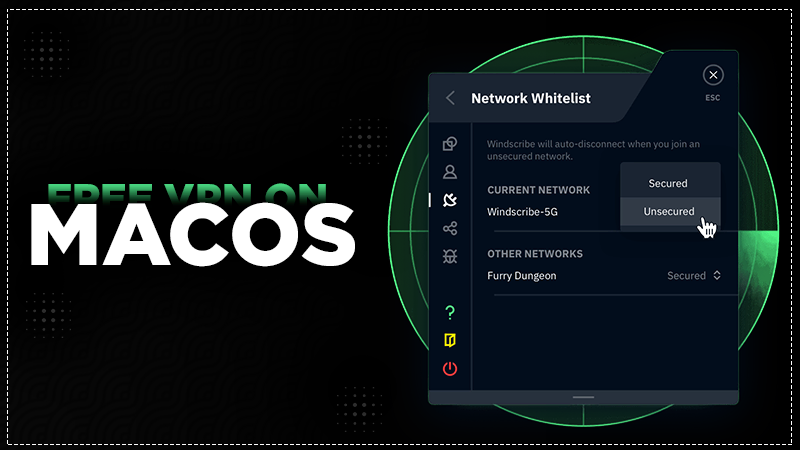
Are you tired of struggling with data management in your scientific research projects? Welcome to the next frontier of data management in the scientific realm! Enter Totally Science GitLab, since scientific progress thrives on collaboration.
From collecting and analyzing data to drawing conclusions and presenting results, data has always been an integral part of the scientific process. Nowadays, traditional methods of managing data are becoming inadequate and inefficient.
Whereas, version control systems like Git have been used in software development for decades. However, these systems were not designed specifically for scientific data management and came with their own set of limitations when applied in this context.
Challenges like these led to issues with data integrity, reproducibility, and collaboration. Totally Science GitLab (a state-of-the-art software solution) addresses these challenges. It offers a platform that combines version control with data management tools specifically developed for the scientific community.
In this blog post, we delve into how Totally Science GitLab empowers scientific progress.
What Is Totally Science GitLab?
In the past, scientists had to do everything manually. Thankfully the advent of advanced tools like GitLab makes science much easier and faster. The fact that GitLab wasn’t initially created for scientists, but its endless abilities, helped scientists a lot.
Now, what exactly is this revolutionary tool? Totallyscience GitLab is a comprehensive platform that combines version control, collaboration, and project management functionalities under one umbrella. It’s a complete DevOps solution.
Researchers are now empowered to track changes in their datasets, collaborate with team members seamlessly, and manage multiple projects effortlessly. So, there are no more worries over the chaos of scattered files and folders.
Fast Fact:
In 2018, GitLab became the fourth fastest-growing private software company, with over 100,000 organisations and users leveraging it.
Totally Science GitLab’s Significance in Scientific Research
For the scientific community, Totally Science GitLab is an innovative approach. See how:
- Enhanced Collaboration Across Disciplines
Due to their interdisciplinary nature, scientific projects demand collaboration across diverse fields. Totally Science GitLab facilitates seamless collaboration between researchers who possess different expertise. This gives rise to innovative solutions and accelerates the pace of scientific discovery.
- Promoting Open Science Practices
Open science is a fundamental principle that promotes transparency, reproducibility, and accessibility in research. GitLab aligns well with these principles. Researchers can openly share their code, data, and methodologies. This allows for the validation and verification of research findings by peers.
- Streamlined Reproducibility
GitLab’s version control, integrated data repositories, and automated testing make reproducing experiments and analyses more straightforward. This enhances the credibility and reliability of scientific outcomes.
- Efficient Project Management
Totally Science incorporates project management features for tasks, milestones, and collaborators. Those features streamline complexities and provide a platform for communication, task assignment, and progress tracking.
- Adaptable to Varied Research Environments
The strengths of Totally Science GitLab lie in its adaptability to diverse research
environments. This platform accommodates the varying needs and scales of scientific research endeavors.
Key Features of Totally Science GitLab

A tool that goes beyond just version control, totally science GitLab has many new and exciting features that ease scientific stress. Here’s a breakdown of some key features:
Collaborative Features
1. Version Control and Collaboration
- Track changes made to their data.
- Easy to revert to previous versions if necessary.
- Seamless collaboration between team members
2. Code Review
- Built-in code review tools ensure all code is thoroughly reviewed before being merged.
- Promotes high-quality research.
3. Continuous Integration/Continuous Delivery (CI/CD) Pipelines
- GitLab’s CI/CD pipelines automate testing, integration, and deployment of scientific code.
- Ensure code quality and catch bugs.
- Reduce manual errors and increase efficiency.
Data Management
1. Storage and Sharing Capabilities
- Provides a centralized repository for research data.
- Data is well-organized and readily available when needed.
2. Data Visualization Tools
- Enable researchers to create charts, graphs, and other visual representations of their data.
- Used for analysis and presentation purposes.
3. Integration with Jupyter Notebooks
- Combine code, data, and visualizations in one document.
- Allow researchers to collaborate and version control their notebooks.
Enhanced Security Measures
1. Encryption of Code Repositories
- Research data and code are secure from unauthorized access.
- Protect sensitive information and maintain the integrity of research data.
2. Permission Controls for Team Members
- Set permissions for team members.
- Controlling who can access, edit, or merge code.
- Only authorized individuals have access to sensitive research data.
Automation Tools for Repetitive Tasks
1. Scheduling of Tasks Using Cron Jobs
- Schedule repetitive tasks using cron jobs.
- It helps to save time and effort by automating routine tasks.
2. Auto DevOps Feature to Automate Deployment
- Automates the deployment process, reducing manual errors
- Beneficial for large research teams working on multiple projects simultaneously.
3. Creating Custom Automated Workflows
- Creation of tailored automated workflows for specific research needs.
- Automate repetitive tasks and streamline the research process.
GitLab for Scientific Workflows
1. Reproducibility through version control
- Track changes made to data and code.
- Easier to replicate experiments and results.
2. Automated Validation Processes
- CI/CD pipelines automate validation processes,
- Useful for complex scientific workflows involving large amounts of data.
3. Integration With Docker Containers
- GitLab integrates with Docker containers.
- Researchers can load their code and dependencies into self-contained units.
- Promotes reproducibility through replicated experiments, regardless of the computing environment.
The Benefits Of Totally Science GitLab
Science has been advancing at an incredible pace, bringing about significant changes. In scientific research, the use of GitLab for data management offers game-changing benefits.
Some of them are as follows:
- It increases productivity and efficiency in scientific research.
- It saves a lot of time and resources.
- Seamlessly manage all aspects, from code to data to documentation.
- Streamline communication and feedback among team members.
- Improve transparency and accountability through version control and audit trails provided by GitLab’s advanced features.
- Ensure the security of sensitive research data with GitLab’s built-in access controls and encryption capabilities.
- 24/7 support from a dedicated team of experts.
- Access to a vast community of researchers for valuable insights, best practices, and potential collaborations.
- Seamlessly integrate third-party tools such as Jupyter Notebooks or RStudio for customized workflows.
- Enjoy cost savings.
How To Use Totally Science GitLab?
Using TotallyScience GitLab is not rocket science. Here is how you can use the platform:
- Start by creating a new project on the platform. For that, define your project scope, set goals, and invite collaborators earlier.
- Then, add your research data files to the repository and commit changes regularly to track the progress of your work.
- You have options to utilize branches to work on different aspects of your project simultaneously without interfering with each other’s work.
- Once you are all set to move ahead, it’s time to collaborate with team members by assigning tasks, reviewing code, and merging contributions within GitLab.
- Besides, make the most of issue tracking to manage project milestones and keep everyone on the same page regarding tasks and deadlines.
- Then, consider utilizing continuous integration (CI) pipelines to automate testing processes for your codebase.
- Ensuring changes made are thoroughly checked before being merged into the main branch.
- Additionally, leverage container registries within GitLab for efficient storage and sharing of Docker images used in your research projects.
By following these steps and exploring more advanced features, you can streamline your data management process and enhance collaboration within your scientific research team.
To Summarize
This article sheds light on various aspects connected with Totally Science GitLab. From its efficient collaboration features to its advantages, it provides a comprehensive solution for managing and tracking scientific research.
This platform is definitely the ultimate solution for modern scientific research, as it empowers researchers to focus on what they do best. Hence, encouraging them to push their boundaries of knowledge and innovation.
Overall, it is evident that embracing tools like Gitlab is necessary to stay ahead in research endeavors.
Also Read: Geekzilla Podcast – Highlights, Reveal All The Secrets Discoveries













